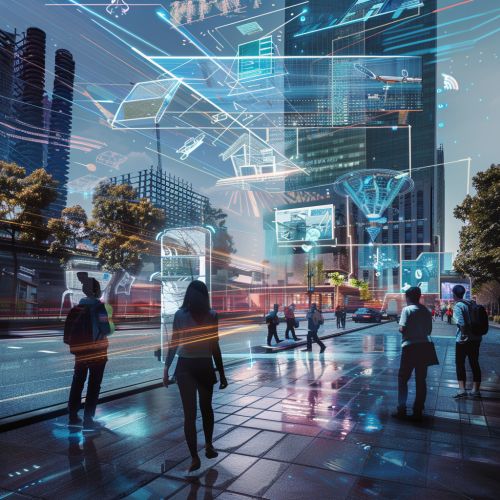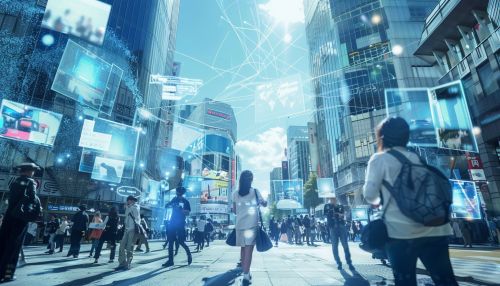Technology and Society
Introduction
Technology and society are intrinsically linked, with each influencing the other's development and impact. The relationship between technology and society has been a subject of academic interest and research, with scholars from various disciplines examining the ways in which technological innovations and advancements shape societal structures, behaviors, and attitudes, and vice versa.


Historical Overview
The interaction between technology and society can be traced back to the advent of human civilization. Early humans developed simple tools and technologies to aid in survival and productivity, which in turn shaped societal structures and behaviors. The Agricultural Revolution, for instance, saw the development of farming technologies that led to the establishment of settled communities and the rise of complex societies.
The Industrial Revolution in the 18th and 19th centuries marked a significant turning point in the relationship between technology and society. The advent of mechanized production technologies transformed economic and social structures, leading to urbanization, the rise of the working class, and significant changes in lifestyle and culture.
In the 20th and 21st centuries, the Digital Revolution and the advent of Information and Communication Technology (ICT) have further reshaped society. The widespread use of computers, the internet, and mobile technology has transformed how we work, communicate, learn, and entertain ourselves, leading to the emergence of the Information Society.
Impact of Technology on Society
Economic Impact
Technology plays a crucial role in economic development and prosperity. Technological innovations and advancements drive economic growth by improving productivity and efficiency. The rise of the Digital Economy, characterized by the widespread use of ICT in economic activities, has created new industries, jobs, and sources of income. However, it has also led to job displacement and economic inequality, as those who lack access to or skills in using ICT are left behind.
Social Impact
Technology also has profound social impacts. It influences how we communicate, form relationships, and create and share knowledge. The advent of social media and other digital communication technologies has transformed social interactions and relationships, enabling instant and global communication. However, these technologies also raise concerns about privacy, cyberbullying, and the spread of misinformation.
Cultural Impact
Technology shapes culture by influencing the ways in which we create, consume, and interact with cultural products and practices. The rise of digital media technologies has transformed cultural consumption, enabling access to a vast array of cultural products from around the world. However, it also raises concerns about cultural homogenization and the erosion of local cultures.
Environmental Impact
Technology has both positive and negative environmental impacts. On the one hand, technological innovations can contribute to environmental sustainability by improving resource efficiency and developing sustainable alternatives to harmful practices. On the other hand, the production and use of technology contribute to environmental degradation through pollution, waste, and resource depletion.
Impact of Society on Technology
Society influences the development and use of technology in various ways. Social needs and problems often drive technological innovation, as inventors and engineers seek to develop technologies that address these needs and problems. Social values and norms also shape the design and use of technology, as they determine what is considered acceptable or desirable in a technology.
Societal structures and institutions, such as the economy, politics, and education, also influence technology. Economic factors, such as market demand and competition, drive technological innovation and diffusion. Political factors, such as laws and regulations, can either encourage or hinder technological development and use. Educational institutions play a crucial role in developing technological skills and knowledge.
Conclusion
The relationship between technology and society is complex and multifaceted, with each shaping and being shaped by the other. Understanding this relationship is crucial for managing the impacts of technology and harnessing its potential for societal benefit. As technology continues to evolve and permeate all aspects of society, the need to understand and manage this relationship will only become more important.
